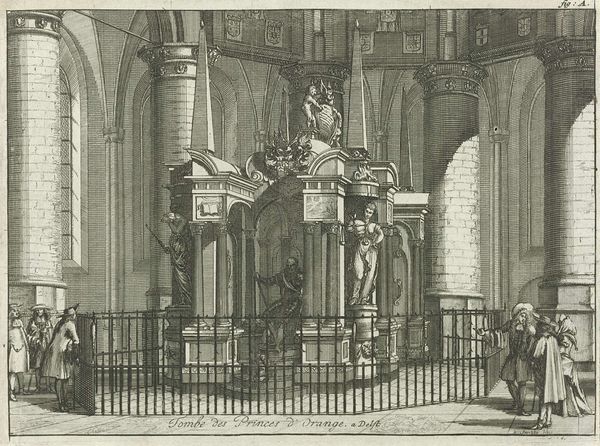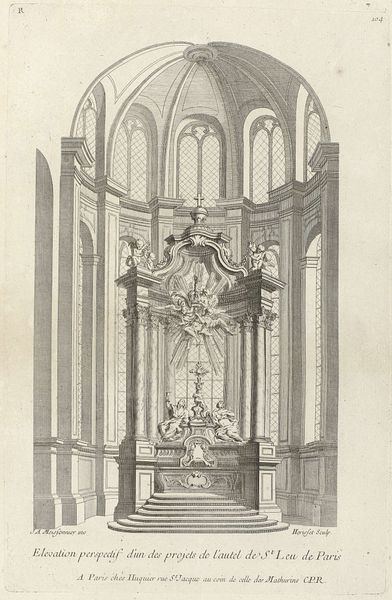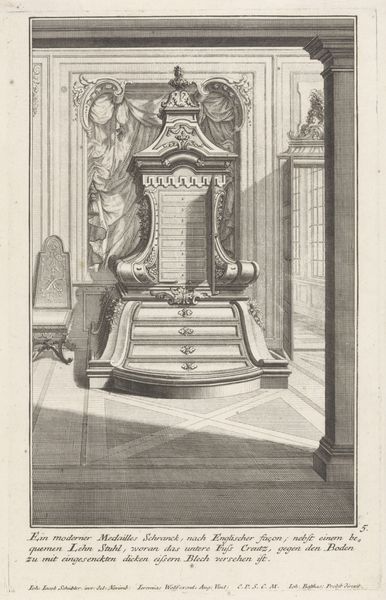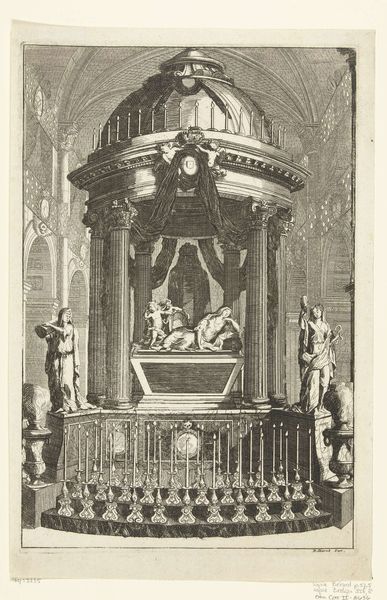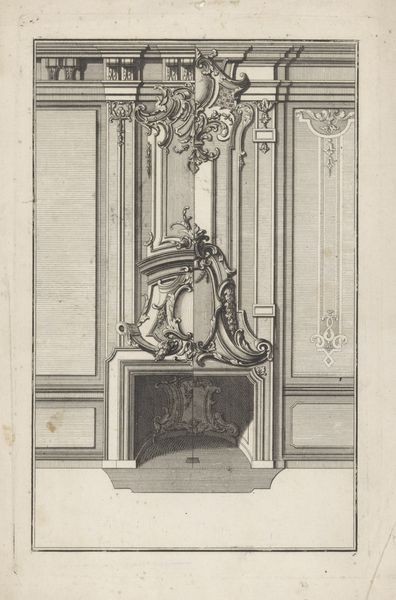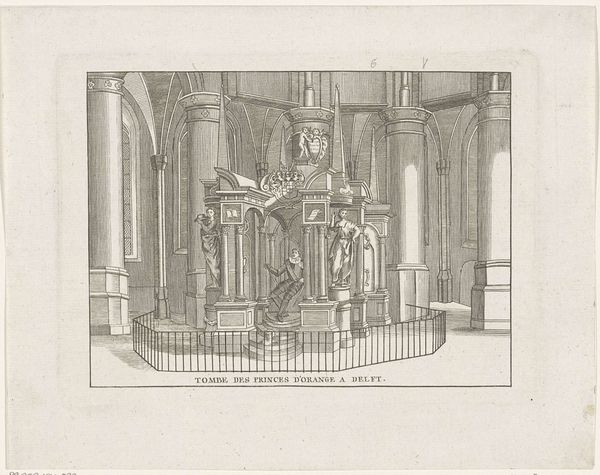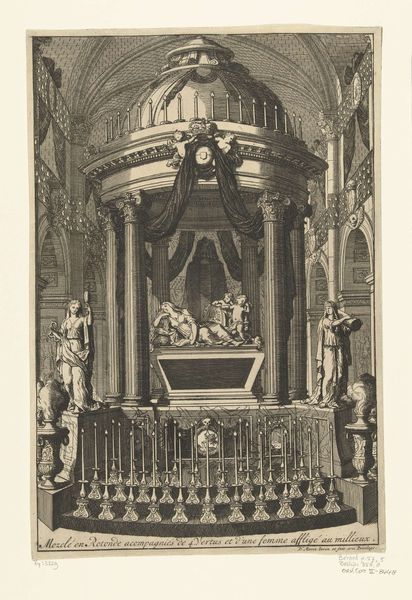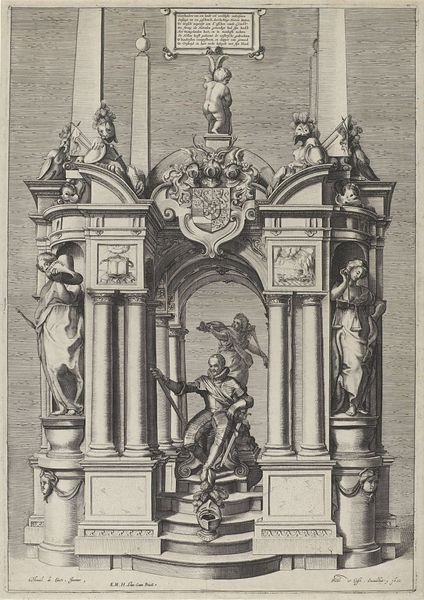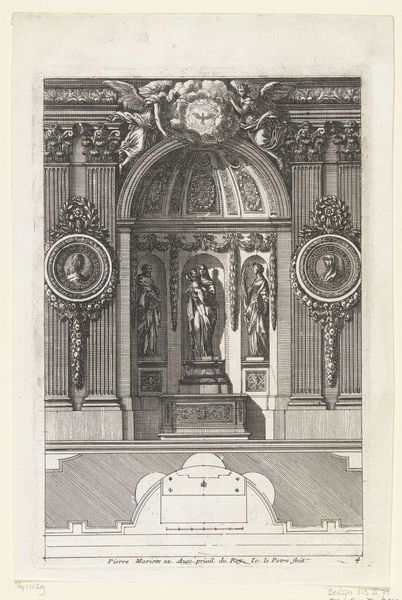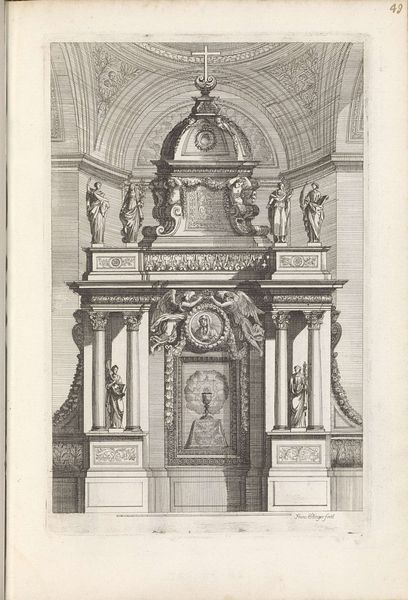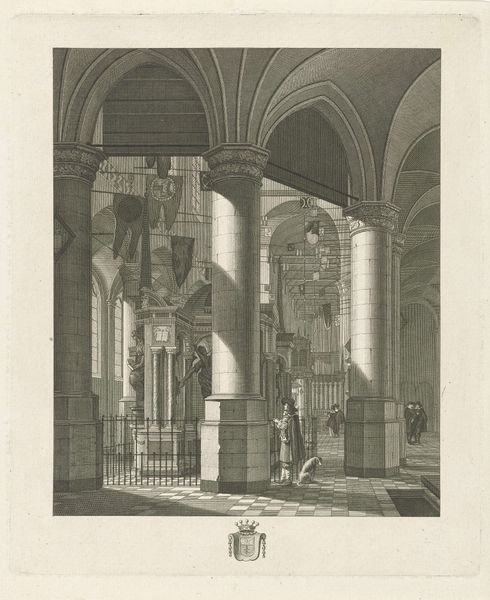
drawing, print, ink, pen, engraving, architecture
#
portrait
#
drawing
#
baroque
#
pen drawing
# print
#
ink
#
pen
#
history-painting
#
engraving
#
architecture
Dimensions: height 356 mm, width 226 mm
Copyright: Rijks Museum: Open Domain
Curator: Here we see "De graftombe van Willem van Oranje, 1623," or "The tomb of William of Orange, 1623," by Nicolaas van Frankendaal, dating somewhere between 1730 and 1791. It's a print, a pen drawing in ink, likely an engraving too. My immediate impression is how monumental it appears, even in this small format. The artist masterfully captures the grandeur of the tomb within the Nieuwe Kerk in Delft. Editor: Grandiose is exactly the word that comes to mind. Look at all those architectural flourishes! The columns, the statues…it’s almost theatrically elaborate. You can practically feel the weight of history bearing down on you. I wonder about the intent. Curator: Its intent, I suspect, was very deliberate statecraft. William of Orange was a pivotal figure, a leader in the Dutch Revolt. Representing his final resting place with such pomp served to solidify his legacy and reinforce the power of the House of Orange in the Dutch Republic's political landscape. It projects legitimacy and permanence. Editor: The visual symbolism here is striking. Each figure on the tomb seems to represent different virtues and values of his reign. Perhaps the military strength or even the embodiment of Dutch liberty. I see symbols which feel simultaneously like defiance and nobility. Curator: Precisely. And note how the tomb is situated within the church. The religious context adds another layer, linking William of Orange to divine purpose and sanctioning his role in the nation's formation. The positioning reinforces the church’s support and places Orange into a divinely inspired historical arc. Editor: It certainly elevates him. The artist captured something far beyond mere commemoration. It serves as an altar to Dutch identity. Viewing it through this lens brings into focus how powerful iconography is to shaping the narrative, or perhaps legend. Curator: Exactly. We see the tomb transformed into a powerful emblem of statehood, faith, and the enduring legacy of leadership in Dutch national consciousness. Editor: Indeed. Reflecting on this artwork makes it evident how places of remembrance serve as constant reminders and tools for shaping identity. It's not just history recorded but history actively sculpted and conveyed.
Comments
No comments
Be the first to comment and join the conversation on the ultimate creative platform.
